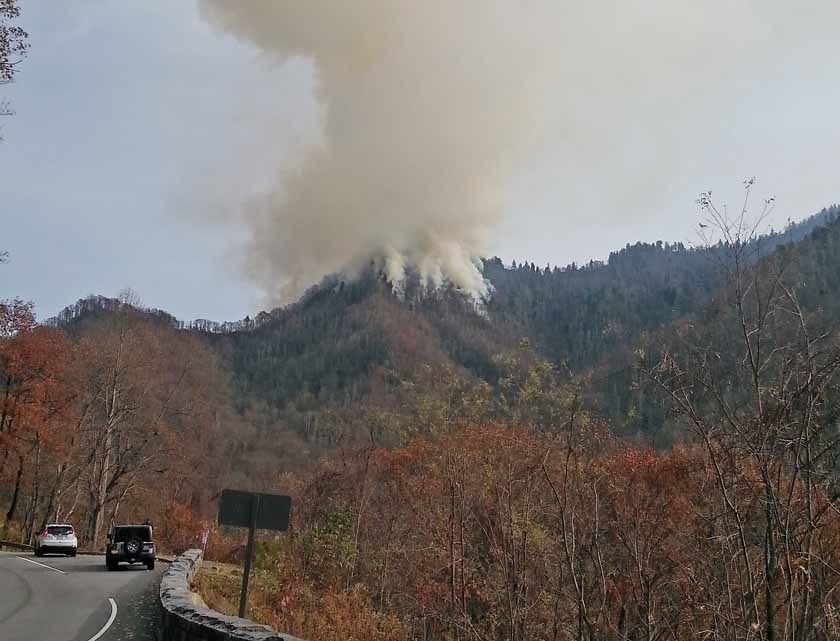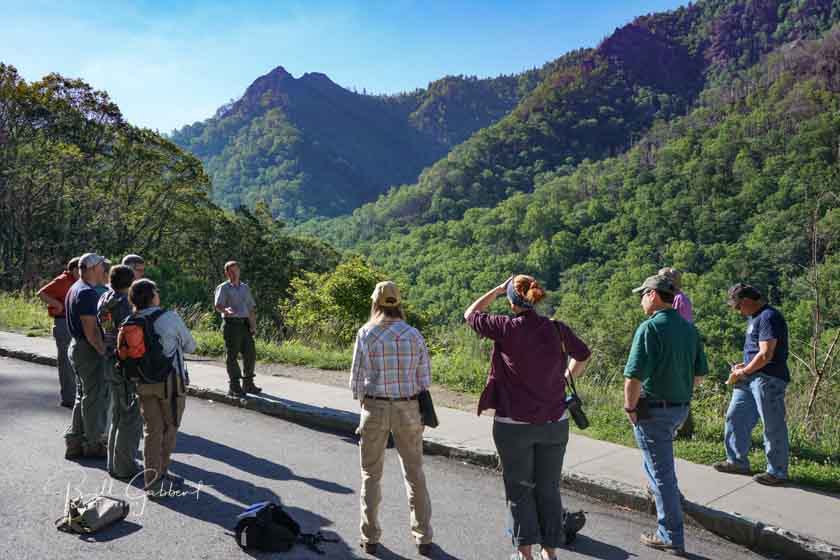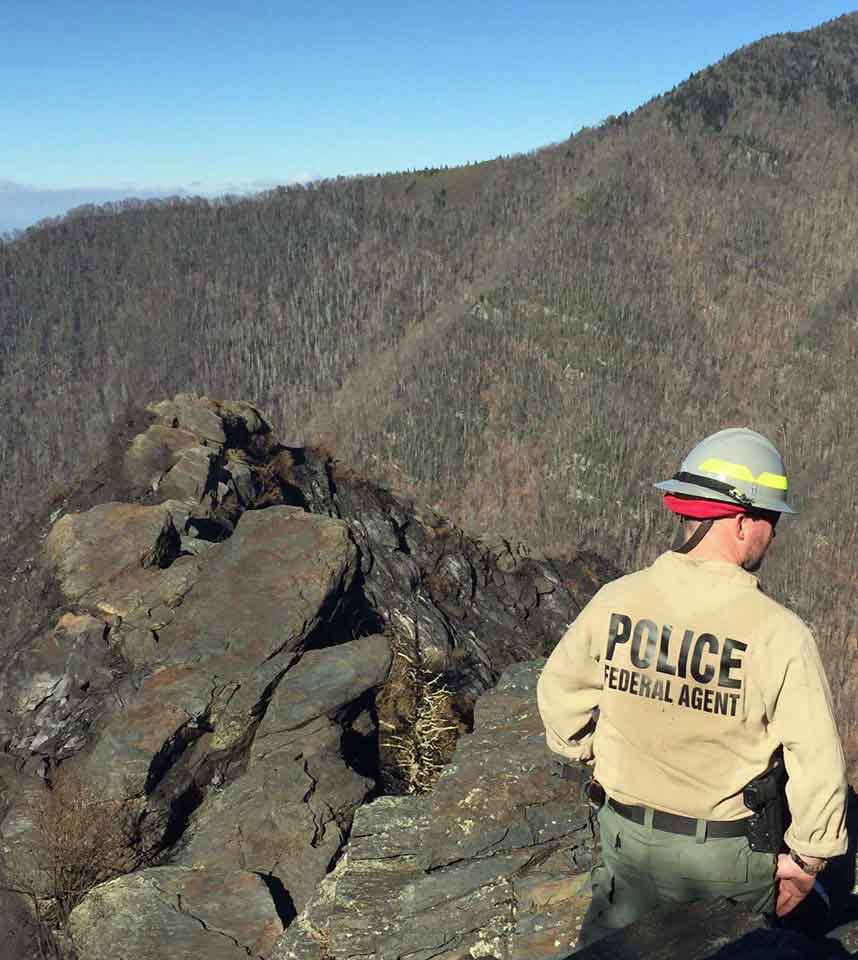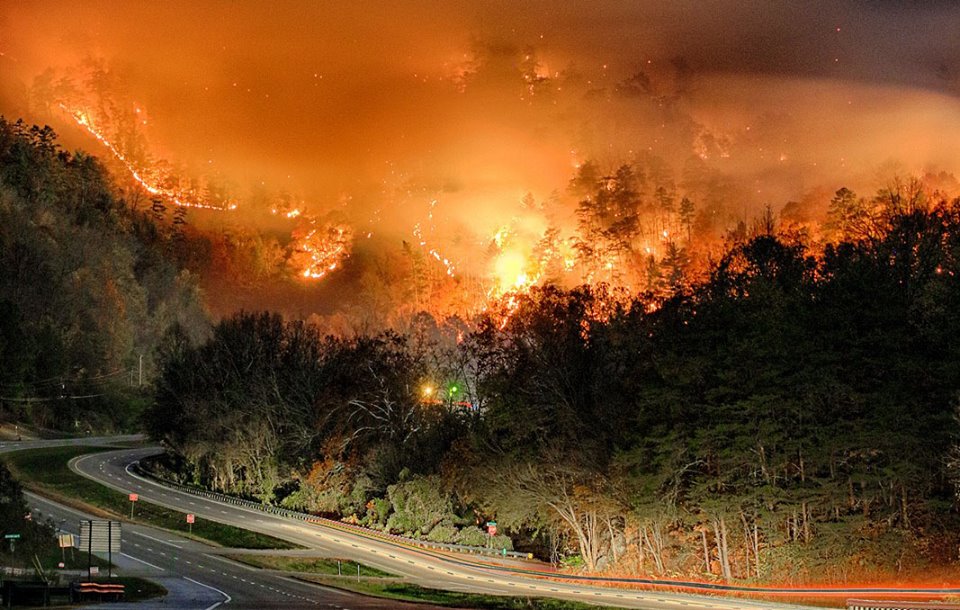
The local prosecutor for the Gatlinburg area announced Friday that he has decided to drop the charges against the two teenaged boys initially thought to be responsible for starting the Chimney Tops 2 Fire that five days later burned into the city in eastern Tennessee killing 14 people, forcing 14,000 to evacuate, destroying or damaging 2,400 structures, and blackening 17,000 acres.
The logic used by Fourth Judicial District Attorney General Jimmy Dunn was that since other fires in the Gatlinburg area were caused by downed wind-blown power lines, it could not be proved that any one particular fire caused specific deaths or property damage.
The arson charge would be within the jurisdiction of the Federal government since it occurred on land administered by the National Park Service.
U.S. Attorney Nancy Stallard Harr issued a statement saying, “the U.S. Attorney’s Office is in communication with the District Attorney General’s office. A review of the evidence in this case will have to take place in order to determine whether it is appropriate to seek approval from the Attorney General to prosecute juvenile offenders in federal court.”
Mr. Dunn also issued a statement, reading in part:
…the unprecedented, unexpected and unforeseeable wind event that started in the early morning hours of November 28,2016, approximately four and a half days after the initial origin of the fire, was the primary reason of the Chimney Tops II fire traveled outside the park into Gatlinburg. But for the winds that reached speeds in excess of 80 miles per hour, it is highly unlikely and improbably that the Chimney Tops II fire would have left the Great Smoky Mountains National Park and reached Gatlinburg.
Greg Salansky, Fire Management Officer for Great Smoky Mountains National Park, said the evening of November 26 he received word that a wind event was in the forecast for the afternoon of the 28th. The winds arrived very early in the morning on the 28th, about 12 hours before they were predicted to begin.
Below is the complete statement issued by District Attorney General Jimmy Dunn today:
****
“For the past seven months, an investigation has been underway into the origin, cause and consequences of a fire that started on November 23, 20165, in an area of the Great Smoky Mountains National Park referred to the Chimney Tops. The investigation is now complete the investigation was led by the Tennessee Bureau of Investigation with the assistance of the National Park Service and local law enforcement, as well as various other local, state and federal agencies. The investigation involved thousands of investigative hours, over 100 witness and expert interviews across multiple states, thousands of potential witnesses, as well as thousands of pages of documents, records photographs and hours of video evidence and audio recordings.
After a comprehensive review of all of the evidence gathered and presented by the Tennessee Bureau of Investigation, Gatlinburg Police Department, Pigeon Forge Police Department, Sevier County Sheriff’s Office, the State, in consultation with other law enforcement agencies and various experts in wildfire progression, has determined that the unprecedented, unexpected and unforeseeable wind event that started in the early morning hours of November 28,2016, approximately four and a half days after the initial origin of the fire, was the primary reason of the Chimney Tops II fire traveled outside the park into Gatlinburg. But for the winds that reached speeds in excess of 80 miles per hour, it is highly unlikely and improbably that the Chimney Tops II fire would have left the Great Smoky Mountains National Park and reached Gatlinburg.
Because of this intervening weather event, the State is unable to prove the criminal responsibility of two juveniles beyond a reasonable doubt for the devastation that occurred outside the Great Smoky Mountains National Park. In addition to the wind, the State’s cause is further complicated by the fact that there were other fires in the area and other confirmed ignition points in the Gatlinburg area from multiple downed power lines that were felled by the wind. Some of these fires appear to have erupted prior to the fire from the Park breaching the Gatlinburg city limits. Once the investigation confirmed multiple fires with multiple points of origin, it became impossible to prove which fire may have caused the death of an individual or damage to a particular structure. Based upon this evidence, the State’s case was narrowed to prosecuting conduct that occurred wholly within the Great Smoky Mountains National Park.
Once the State determined that is prosecution may be limited to conduct and actions occurring within the Great Smoky Mountains National Park, the District Attorney’s Office conducted additional research and investigation into jurisdictional issues regarding criminal prosecution by the State for actions or events that occur wholly within National Park land. This investigation and research revealed the existence of two documents or “Memoranda of Agreement” regarding concurrent criminal jurisdiction between the State of Tennessee and the National Park Service. One of these documents specifically lists the Great Smoky Mountains National Park as being part of a concurrent criminal jurisdiction agreement between the State of Tennessee and the National Park Service on behalf of the Federal Government. The second of these documents is an exact duplicate of the first, save one critical difference: it does not include the Great Smoky Mountain National Park in the agreement. Eleven other National Park Service on behalf of the Federal Government. The second of these documents is an exact duplicate of the first, save one critical difference: it does not include the Great Smoky Mountain National Park in the agreement. Eleven other National Park Service properties are listed on each document. It is unclear how both of these documents got into circulation, but it is clear that both have been used by various agencies in different contests.
After becoming aware of these competing documents, the State notified the Defense immediately and sought advice from the State Attorney General’s Office as well as the U.S. Attorney’s Office as to which document was controlling and whether or not the State could prosecute criminal acts that occur within the Great Smoky Mountains National Park. After reviewing the documents, both the State Attorney General’s Office and the U.S. Attorney’s Office advised that it was their respective opinions that the State of Tennessee does not have jurisdiction to prosecute criminal acts that occur wholly within the boundaries of the Great Smoky Mountains National Park. Therefore, any prosecution for criminal conduct occurring entirely within the boundary of the Great Smoky Mountains National Park must be initiated by the federal government.
Based upon these findings, the State has no other option but to dismiss the charges currently pending in state court as there is no subject matter jurisdiction that would allow the state court to take any action. To retain jurisdiction, the State must be able to prove beyond a reasonable doubt that at least one element of a criminal offense occurred outside of the Great Smoky Mountains National Park and within the State’s jurisdiction. The State has concluded that this burden cannot be met due to the intervening weather event that occurred before any fire reached the State’s jurisdiction. Therefore, the decision to prosecute any individuals alleged to have caused a fire within the Great Smoky Mountain National Park is now within the purview of the United States Department of Justice.
The District Attorney’s Office for the Fourth Judicial District would like to thank all agencies, law enforcement and otherwise, including the TBI, the National Park Service, the Sevier county Sheriff’s Office (with special recognition for the outstanding work done by the GIS Division), the Gatlinburg Police Department, the Pigeon Forge Police Department, the Pittman Center Police Department, the Department of the Interior, the Bureau of Alcohol, Tobacco and Firearms and the Tennessee Department of Agriculture, Division of Forestry, for their incredible hard work in investigating this unprecedented event. This office would also like to thank and commend the hundreds of firefighters and police officers from the national, regional, state and local levels for their extraordinary bravery and courage in confronting these fires.”




























